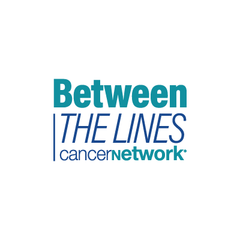
An Overview of Proteasome Inhibitor Therapy in Multiple Myeloma
A broad look at the historical use of proteasome inhibitor therapy in patients with multiple myeloma centered on 3 agents: bortezomib, carfilzomib, and ixazomib.
Episodes in this series

Transcript:
Paul G. Richardson, MD: Good evening to everyone and a warm welcome to our updates in the use of proteasome inhibitors for relapsed and refractory multiple myeloma, and it’s my pleasure to be with you all from Boston. Cristina is joining us from Rome.
Cristina Gasparetto, MD: Absolutely.
Paul G. Richardson, MD: It’s an absolute pleasure to welcome Cristina. Thank you for being with us tonight.
Cristina Gasparetto, MD: I am very pleased to be here with you, Paul.
Paul G. Richardson, MD: Thank you. My name is Dr. Paul Richardson from the Dana-Farber Cancer Institute in Boston, Massachusetts.
Cristina Gasparetto, MD: My name is Cristina Gasparetto, and I’m at Duke University [School of Medicine] in Durham, North Carolina.
Paul G. Richardson, MD: In terms of our discussion this evening, we are going to talk about proteasome inhibition in the treatment of relapsed/refractory myeloma. Our focus is to recognize that with all of the excitement that there is in multiple myeloma with multiple other therapies available, including monoclonal antibodies, immunomodulatory drugs, cellular therapies, and other more novel small molecules, it’s important to remember that our backbone agents include proteasome inhibition. This has been a mainstay of therapeutics in myeloma for the last 22 years to be precise. With that in mind, the emphasis on bortezomib as our first-in-class boronate peptide with IV [intravenous] and subcutaneous administration and FDA approval as long ago as 2003, had a major impact on survival. I’d love to ask Cristina to comment on the impact of carfilzomib.
Cristina Gasparetto, MD: Carfilzomib is a phenomenal drug and has impacted the outcomes on lives of many patients with myeloma. We do have approved carfilzomib in combination with dexamethasone, and carfilzomib, lenalidomide, and dexamethasone as part of the ASPIRE and ENDEAVOR studies. It’s been 10 years since it was approved in 2012. It is an amazing, phenomenal drug, and is still used in many of the newer combinations for treatment of both newly diagnosed and relapsed/refractory disease.
Paul G. Richardson, MD: The other exciting thing that’s so interesting is the test of time. You touched on the fact that it’s been 10 years since carfilzomib was approved for relapsed/refractory disease, and it’s a mainstay of therapy in relapse, and obviously has made an impact in upfront treatment now as well. Bortezomib has been a mainstay of both upfront and relapsed disease, and both drugs have held their position as primary proteasome inhibitors of choice in our combination strategies and in the various places where we deploy proteasome inhibition for our patients. I would love to move to the third member of the proteasome inhibitor family, ixazomib, and have your thoughts on that.
Cristina Gasparetto, MD: We were all very excited about this drug when it was first approved in 2015. It was the first oral proteasome inhibitor, so we were all thinking about convenience and different strategies for our patients. It is an intriguing drug because it’s effective, but we have some concerns about the power of this drug in different combinations, and so I’m glad that we can open a discussion tonight. It’s definitely a very interesting and an important drug in the field of myeloma.
Paul G. Richardson, MD: I absolutely agree. The important point is that we have bortezomib as the boronate peptide of choice for intravenous, subcutaneous use. Carfilzomib is an epoxy ketone that’s an irreversible inhibitor of the 20S subunit, and with a particular benefit in terms of being covalently binding and that much more powerful. But the critical differences between the 2 lie of course in tolerability, with different patterns of tolerability. Obviously, we’ve gotten so much better at knowing how to manage their adverse effects, be it cardiovascular in the context of carfilzomib, or neurotoxicologically in the setting of bortezomib. What’s so exciting about ixazomib is that as an orally bioavailable boronate peptide, that rapid-on rapid-off pharmacology has always made it attractive, particularly for our frailer patients. With the convenience of oral administration once a week in combination with other strategies, particularly in what we’re dealing with over the last 2 years with the pandemic, it has been especially helpful, hasn’t it Cristina?
Cristina Gasparetto, MD: Absolutely.
Transcript edited for clarity.
Newsletter
Stay up to date on recent advances in the multidisciplinary approach to cancer.




















































































